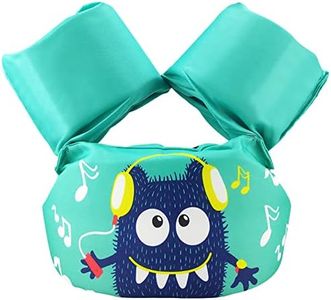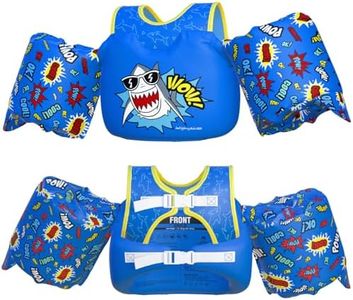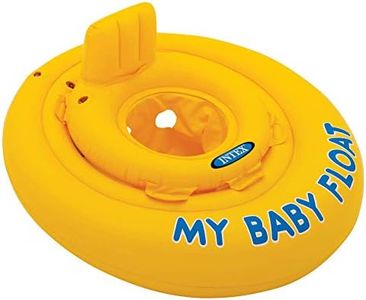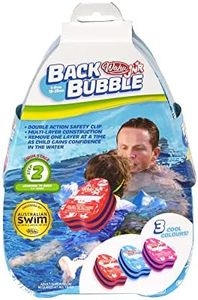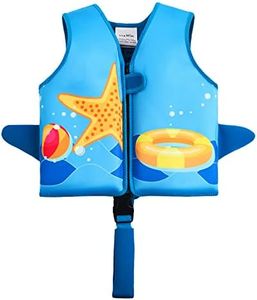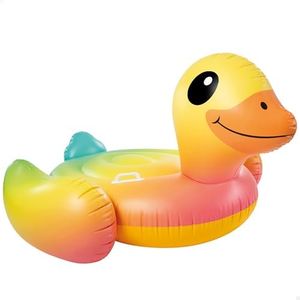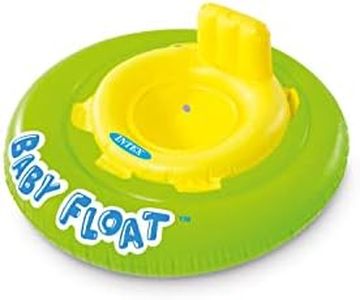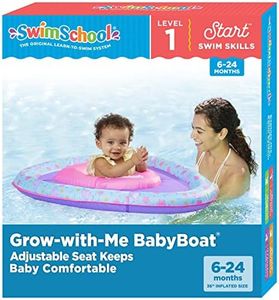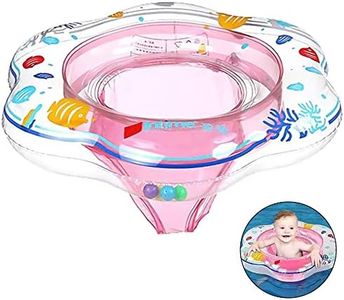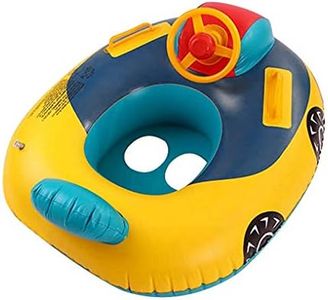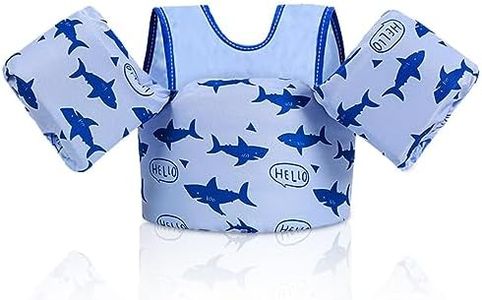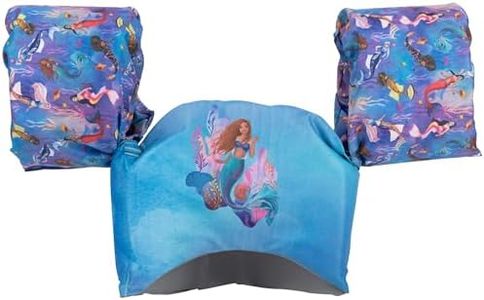We Use CookiesWe use cookies to enhance the security, performance,
functionality and for analytical and promotional activities. By continuing to browse this site you
are agreeing to our privacy policy
10 Best Toddler Floaties
From leading brands and best sellers available on the web.By clicking on a link to a third party's website, log data is shared with that third party.
Buying Guide for the Best Toddler Floaties
Choosing floaties for toddlers is about making sure your child is safe, comfortable, and happy in the water. Floaties are designed to help toddlers stay afloat as they get used to the water, but they’re only a swimming aid and should never replace close adult supervision. To pick the right floaties, it’s important to understand the different features they offer and how those features match your child’s abilities and swimming confidence.Floatation TypeFloatation type refers to the design and where the floatation support is provided, such as arm bands, swim vests, or puddle jumpers. Arm bands just go on the arms and mainly keep the upper body afloat, swim vests offer full-torso support, and puddle jumpers combine chest and arm floatation for more stability. For young toddlers just starting out in the pool, vests and puddle jumpers provide more balance and confidence, whereas arm bands might suit slightly older or more confident little swimmers. Think about the level of independence and water confidence your toddler has – beginners tend to benefit from more support.
Size and FitSize and fit indicate how well the floaties will sit on your child’s body. If floaties are too loose, they can slip off or fail to keep your child’s head above water; too tight and they can be uncomfortable. Most floaties come with weight or age guidelines – choose one that matches your toddler’s current stats and always try them on before using. A snug but gentle fit is key, and adjustable straps can help achieve the right level of comfort as your child grows.
Material QualityThe material quality determines the floatie’s durability, comfort, and safety. Common materials include vinyl and neoprene. Vinyl is lightweight and often less expensive but can be prone to punctures, whereas neoprene is more robust and can feel softer against the skin. For frequent use or if your child has sensitive skin, a higher quality, softer fabric may be preferable. Look for materials that are smooth, non-chafing, and free from rough seams, as well as being quick-drying.
Safety FeaturesSafety features encompass everything from secure buckles and adjustable straps to anti-leak valves and bright colors for visibility. Some floaties have double air chambers for extra security, while others include crotch straps to prevent the floatie riding up. Visible colors make it easier for adults to keep track of kids in the water. Always check if the floaties are certified to recognized safety standards, as that gives added peace of mind.
Ease of UseEase of use includes how simple it is to put on, take off, and inflate or deflate the floaties. If you’re carrying lots of gear or managing more than one child, quick-fitting options make pool trips smoother. For inflatable floaties, valves that don’t leak and deflate quickly can be convenient, while step-in or slip-on vests save time and struggle. Think about your usual pool routine and choose floaties that fit seamlessly into it.
MobilityMobility refers to how freely your toddler can move their arms and legs while wearing the floaties. Some designs are bulkier and may restrict swimming strokes or play, while others give more freedom of movement. If you want your toddler to practice basic kicking or arm paddling, choose a style that allows this, but always balance freedom with the level of support they still need for safety.
